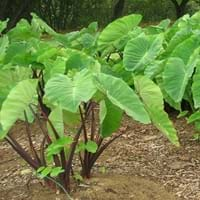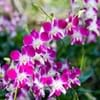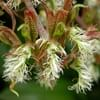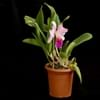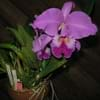Life Span
Perennial
Annual
Type
Epiphyte
Tender Perennial
Origin
Southeastern Asia
Southeastern Asia
Types
Phalaenopsis
Dendrobium
Cattelya
Cymbidium
Epidendrum
Oncidium
Miltonia
Vanda
Eddoe taro, Dasheen taro
Habitat
gardens, Urban areas
agricultural areas, Hillside, Warm and moist climatic conditions
USDA Hardiness Zone
12-14
10-11
Sunset Zone
H2
H1, H2, 22, 23, 24
Habit
Clump-Forming
Clump-Forming
Flower Color
Fuchsia, Violet, Plum, Ivory
White, Green
Flower Color Modifier
Not Available
Not Available
Fruit Color
Not Available
Red
Leaf Color in Spring
Green
Dark Green, Ivory
Leaf Color in Summer
Green
Dark Green, Ivory
Leaf Color in Fall
Green
Dark Green, Ivory
Leaf Color in Winter
Green
Dark Green, Ivory
Leaf Shape
Oblovate
V-Shaped
Plant Season
Summer, Fall
Spring, Summer, Fall, Winter
Sunlight
Partial Sun, Partial shade
Partial shade, Full Shade
Type of Soil
Not Available
Loam, Sand
The pH of Soil
Not Available
Acidic, Neutral
Soil Drainage
Well drained
Well drained
Bloom Time
Summer, Late Summer, Early Fall, Fall
Indeterminate
Tolerances
Not Available
Heat Tolerance, Humidity, Salt and Soil Compaction, Shallow soil
Where to Plant?
Container, Ground, Pot
Container
How to Plant?
Seedlings
From Rhizomes
Plant Maintenance
Medium
Medium
Watering Requirements
Do not water frequently, Water in morning to avoid prompting diseases, Water occasionally
Needs 2-3 times watering per week, Needs a lot of water initially
In Summer
Lots of watering
Lots of watering
In Spring
Moderate
Moderate
In Winter
Average Water
Average Water
Soil pH
Not Available
Acidic, Neutral
Soil Type
Not Available
Loam, Sand
Soil Drainage Capacity
Well drained
Well drained
Sun Exposure
Partial Sun, Partial shade
Partial shade, Full Shade
Pruning
Remove damaged leaves, Remove dead branches, Remove dead leaves
No pruning needed
Fertilizers
All-Purpose Liquid Fertilizer
All-Purpose Liquid Fertilizer, Less fertilizing
Pests and Diseases
Red blotch
Aphids, Rats, Snails
Plant Tolerance
Drought
Heat Tolerance, Salt and Soil Compaction, Shade areas
Flowers
Showy
Insignificant
Flower Petal Number
Single
Not Available
Foliage Texture
Coarse
Bold
Foliage Sheen
Glossy
Glossy
Attracts
Not Available
Aphids, Bugs, Not Available, Snails
Allergy
no allergic reactions
Swelling in mouth, Throat itching
Aesthetic Uses
Beautification, Bouquets, Landscape Designing, Showy Purposes, Used for decorating walls, fences, gates, hedges, etc.
Showy Purposes
Beauty Benefits
Not Available
Poison Ivy, Skin cleanser, Weightloss
Environmental Uses
Air purification
No fertilizer, pesticides, or herbicides needed, Prevent weeds
Medicinal Uses
Cancer, Eye Problems
Aging, Laxative, Weight loss
Part of Plant Used
Whole plant
Leaf Stalks, Leaves
Other Uses
Air freshner, Employed in herbal medicine, Making Perfumes, Making Sweet Scented Oil, Oil is used for aromatherapy, Oil is used in perfume, soaps, creams, etc., Showy Purposes, Used As Food, Used as Ornamental plant, Used for fragrance
Used As Food, Used as Ornamental plant
Used As Indoor Plant
Yes
No
Used As Outdoor Plant
Yes
Yes
Garden Design
Container, Cutflower, Houseplant, Mixed Border, Tropical
Container, Feature Plant, Groundcover, Houseplant, Mixed Border, Tropical
Botanical Name
AERIDES quinquevulnera
ALOCASIA micholitziana
Common Name
Aerides, Orchid
Elephant Ear, Taro
In German
Orchidee
Colocasia (Pflanzengattung)
In French
Orchidée
Colocasia
In Spanish
Orquídea
Colocasia
In Greek
Ορχιδέα
Colocasia
In Portuguese
Orquídea
Colocasia
In Polish
Orchidea
Kolokazja
In Latin
Orchid
Colocasia
Phylum
Magnoliophyta
Magnoliophyta
Class
Liliopsida
Liliopsida
Family
Orchidaceae
Araceae
Clade
Angiosperms, Monocots
Angiosperms, Monocots
Tribe
Vandeae
Colocasiodeae
Subfamily
Epidendroideae
Aroideae
Importance of Orchid and Taro
Want to have the most appropriate plant for your garden? You might want to know the importance of Orchid and Taro. Basically, these two plants vary in many aspects. Compare Orchid and Taro as they differ in many characteristics such as their life, care, benefits, facts, etc. Every gardener must at least have the slightest clue about the plants he wants to plant in his garden. Compare their benefits, which differ in many ways like facts and uses. The medicinal use of Orchid is Cancer and Eye Problems whereas of Taro is Aging, Laxative and Weight loss. Orchid has beauty benefits as follows: Not Available while Taro has beauty benefits as follows: Not Available.
Compare Facts of Orchid vs Taro
How to choose the best garden plant for your garden depending upon its facts? Here garden plant comparison will help you to solve this query. Compare the facts of Orchid vs Taro and know which one to choose. As garden plants have benefits and other uses, allergy is also a major drawback of plants for some people. Allergic reactions of Orchid are no allergic reactions whereas of Taro have Swelling in mouth and Throat itching respectively. Having a fruit bearing plant in your garden can be a plus point of your garden. Orchid has no showy fruits and Taro has no showy fruits. Also Orchid is not flowering and Taro is not flowering . You can compare Orchid and Taro facts and facts of other plants too.

